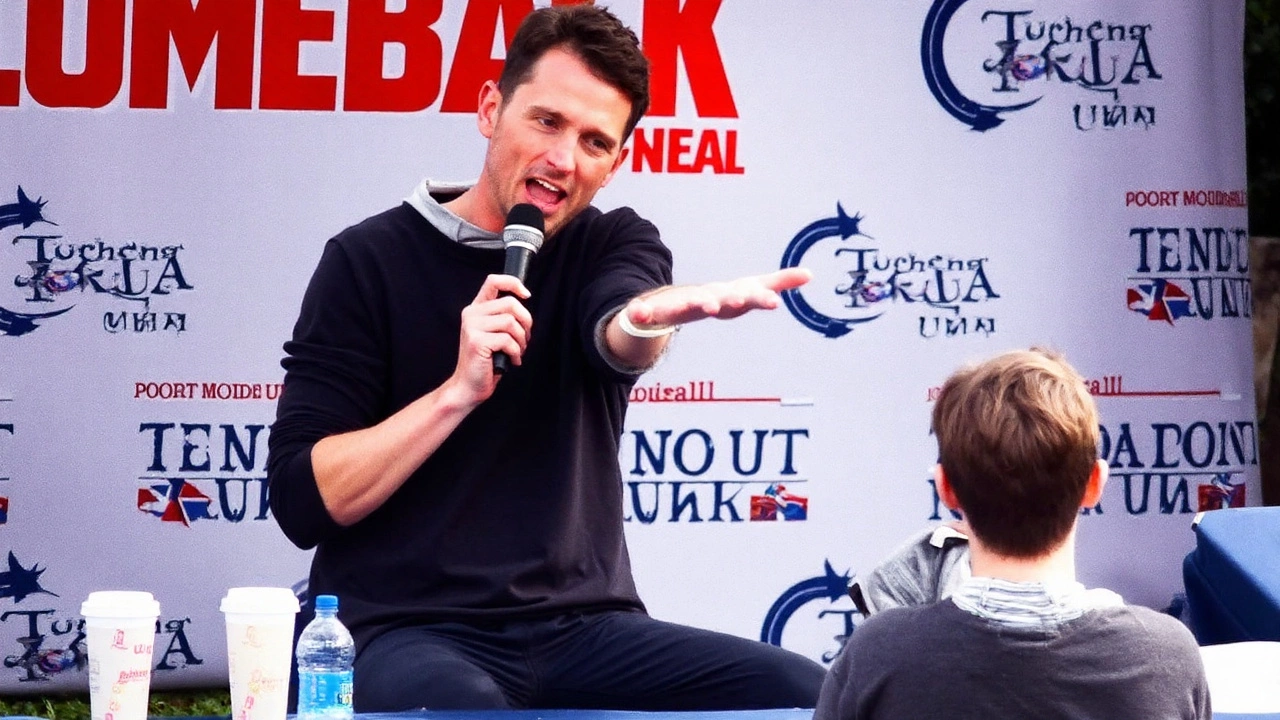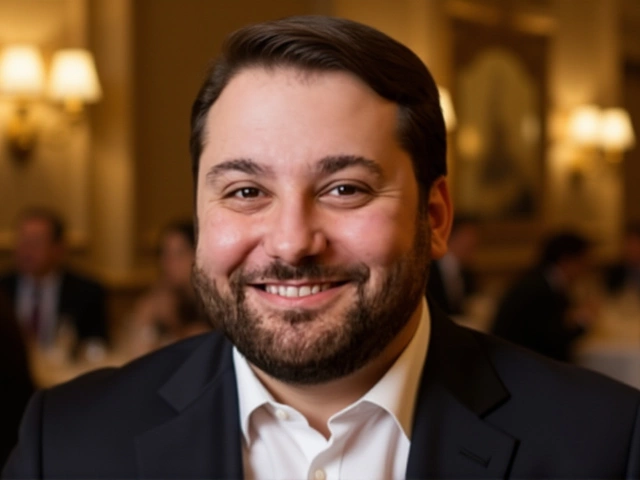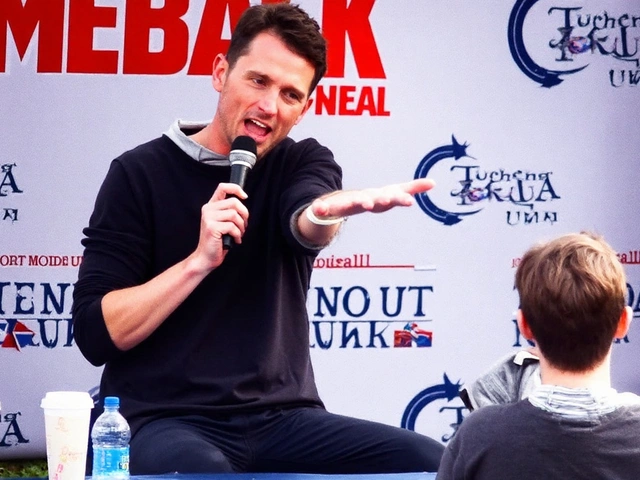Charlie Kirk launches 'Prove Me Wrong' campus tour at Utah Valley University, testing free speech rules

- Aldo Santoso
- 11 September 2025
- 0 Komentar
A tour built for confrontation, not cancellation
A debate table, a microphone, and a promise: if you disagree, you go first. That was the pitch as conservative activist Charlie Kirk opened his "American Comeback Tour" at Utah Valley University, inviting students to challenge him on politics in a public forum he calls a "Prove Me Wrong" table.
Turning Point USA, the student-focused group Kirk founded in 2012, promoted the stop as a "lively discussion of Freedom & America" and offered a fast lane for skeptics: don’t agree with Kirk? Step to the front. The setup is designed for face-to-face argument, not a one-way speech from a stage.
The event immediately split opinion on campus. UVU’s student newspaper, the UVU Review, reported that students were divided over whether Kirk should be hosted at all. An online petition circulated urging administrators to keep him off campus, arguing his brand of politics would inflame tensions. Others pushed back, saying debate is exactly what universities are for and that controversial speakers should be heard and questioned in public.
UVU’s administration took a familiar path for a public institution. In a Sept. 3 statement titled "Free Expression and Neutrality," the university said it does not take official positions on political, social, or cultural controversies unless they directly affect the school’s mission, operations, or core values. Translation: the speaker comes, the ground rules apply, and the university stays out of the political fight.
Kirk’s tour leans into that contested space. Since launching Turning Point USA, he’s built a national network of campus chapters that promote free markets, fiscal conservatism, and limited government. The group’s presence on campuses—tabling, training, conferences, and high-profile speaker events—has grown over the past decade, often drawing protests alongside packed rooms. Supporters see a counterweight to what they view as progressive orthodoxy in higher education. Critics see a pipeline for culture-war talking points packaged for viral clips.
The “Prove Me Wrong” format borrows from a confrontational but conversational style that has spread across right-leaning media: plant a table in a public space, frame a claim, and invite pushback. The model rewards quick thinking and sharp rhetoric. Backers say it builds critical thinking, forcing students to defend their views on the spot. Detractors call it performative, engineered to produce heated moments for social media rather than deep engagement.
At UVU, the message from administrators was about process, not politics. Public universities are bound by the First Amendment, and courts have repeatedly said they cannot block speakers based on viewpoint. They can enforce neutral rules—time, place, and manner restrictions—to keep order. That typically means reserving space, following posting rules, and complying with safety protocols that apply to everyone.
Those policies were front and center as students weighed whether to attend, protest, or ignore the event. Some planned to challenge Kirk on substance—immigration, abortion, energy policy, election rules, and the role of diversity and inclusion programs. Others questioned the platform itself, arguing the format can marginalize students who feel targeted by certain positions and may not want to debate their identity in a public square.
Turning Point USA frames its mission in explicitly educational terms—identify, train, and mobilize students to advocate conservative ideas on campus. The group’s campus chapters, often run by undergraduates, typically handle on-the-ground logistics: booking rooms, coordinating with administrators, recruiting volunteers, and promoting events. When tension rises, campus police and student affairs offices tend to step in—not to judge the content, but to keep the peace.
None of these dynamics are new, but the stakes feel higher in the current climate. Political polarization has seeped into classrooms, student life, and hiring debates. Administrators walk a thin line between protecting student safety and avoiding any hint of viewpoint discrimination. Students, for their part, are deciding where to draw personal lines: engage, counter-program, or push for cancellation.
In that sense, UVU became an early test case for the fall. The school reaffirmed neutrality. A vocal share of students objected. Others leaned in, eager to get a turn at the mic. The event’s promise—front-of-the-line treatment for disagreement—ensured critics would not be sidelined, at least procedurally.
Kirk’s tour is expected to hit additional campuses this semester. Announcements typically flow through campus chapters and student groups, which means dates can pop up quickly as approvals come through. That decentralized approach keeps the focus on students as the conveners and frontline moderators of the debate culture brewing on their own quads.
It also means outcomes will vary by campus. Some schools will see vigorous exchanges and quiet dispersals. Others will draw protests and dueling events across the street. The same rules—public forums, viewpoint neutrality, and safety protocols—will be interpreted through different campus cultures and histories.
- What to watch: whether administrators keep rules consistent across ideologies, especially when security or crowd control is involved.
- Whether students opt to debate at the table, host a counter-event, or escalate calls to cancel—and what engagement looks like in practice.
- How much of the conversation happens in person versus being clipped into narratives on social media.
- Whether the format produces any durable persuasion or simply hardens lines.
For now, the opening scene at UVU captured the paradox of modern campus politics: the same tools that promise open debate also fuel the content economy. A table on a plaza can be a public square or a stage, depending on where you stand. That tension—between civic dialogue and performance—will shadow the tour as it moves from campus to campus, with campus free speech policies doing the quiet, unglamorous work of holding the line.
Free speech on campus: where universities draw the line
Public colleges can restrict events for safety and scheduling, but not because administrators dislike a viewpoint. That’s the core standard that shapes visits like Kirk’s. Schools can require permits, designate zones, and set noise limits. They can impose security measures based on objective risks, but courts scrutinize any rule that penalizes controversial speakers simply for being controversial.
That framework cuts both ways. It protects conservative speakers at left-leaning campuses and progressive speakers at conservative ones. It allows counter-protests in sight and sound of the event, within the same neutral rules. And it asks students to navigate disagreement without calling the referee on ideas alone.
In that environment, Kirk’s “Prove Me Wrong” pitch is both invitation and challenge. If you disagree, step up and say so. Whether that fosters understanding or just sharpens the divide depends less on who holds the mic and more on whether people use it to ask real questions—and listen to the answers.


